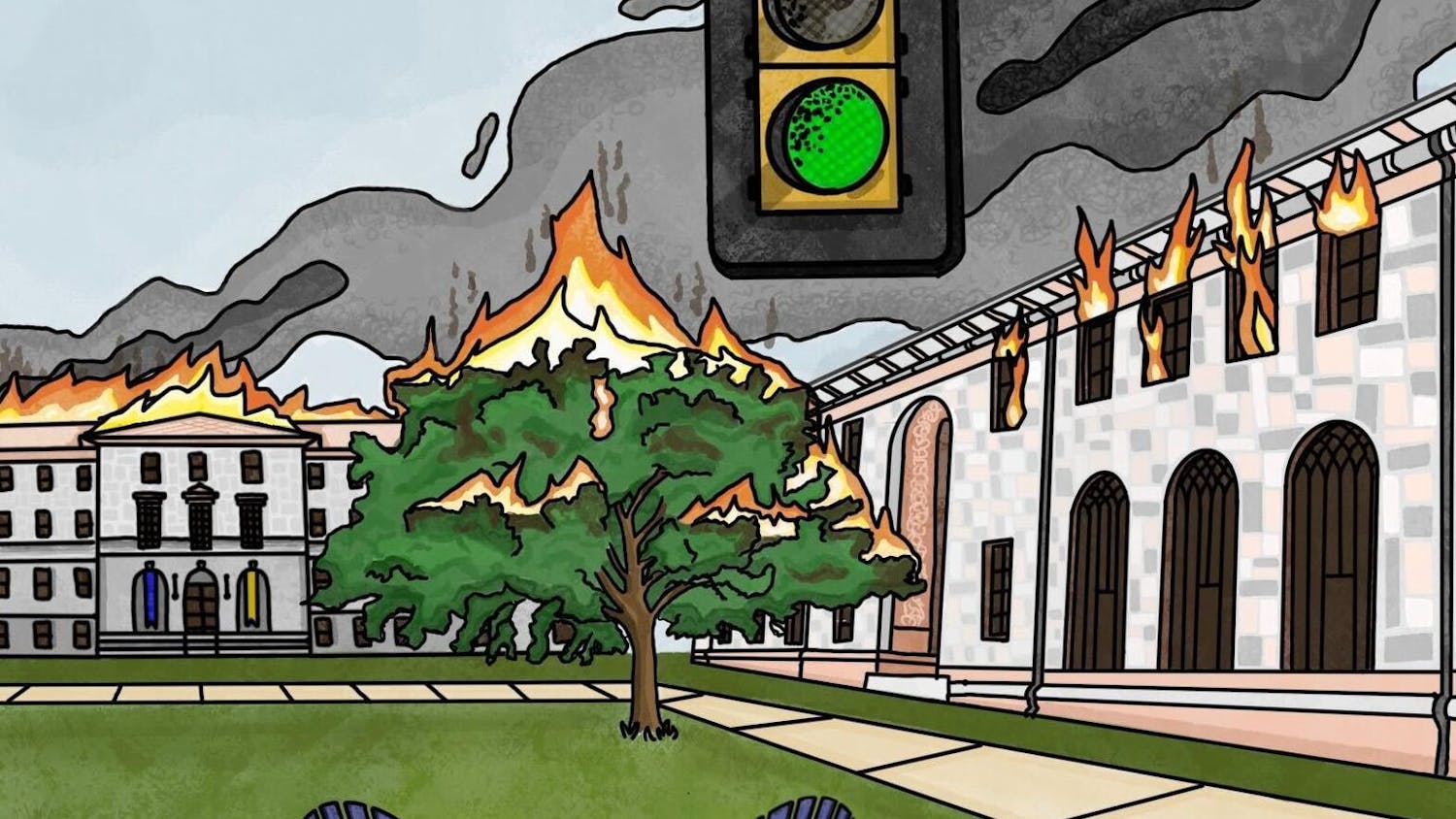When I opened my drawer at the beginning of the semester, trying to stuff in more clothes I thrifted, I found my drawer was overflowing already. That was the moment I realized my obsession with thrifting had gone too far.
As an international student from China, where there is barely a thrifting culture, the thriving thrift shops in the United States were very appealing. In China, cheap, fast-fashion clothing dominates Taobao, the largest digital retail platform. Yet I had to spend more on clothing than prices suggested, as I had to constantly renew my clothes due to their coarse quality. Thrifting isn’t popular in China because secondhand clothes are never kept well enough to be sold. Therefore, when I found a way to thrift cheap but durable secondhand clothing from Goodwill and Buffalo Exchange in Atlanta, I felt like a smart consumer. Unlike traditional clothing stores where clothes are sorted into organized and predictable sections, the colorful, messy racks at thrift stores gave me a thrill that prompted me to dig deeper into the stacks of clothing. However, although originally meant to be the opposite of wasteful, thrifting is becoming the new fast fashion for me and many others. Overconsumption of thrifted clothes is a neoliberal practice that boasts a sustainable image while leading to pollution and unnecessary spending.

Thrifting also gives me a personal image and style that feels unique and glamorous. Styling my thrifted pieces means I can make myself stand out with a vintage or Y2K fashion statement. When people ask me where I bought my stylish clothes, I get to reply with a simple “thrifted,” savoring my irreplicable uniqueness. More importantly, I feel like a climate activist while thrifting because I am ensuring these clothes do not go to waste. Yet overconsumption of thrifted clothing has driven up prices and produced more waste, going against exactly what it emerged for and making it a neoliberal performance instead of a sustainable way of living.
My obsession with thrifting comes from various external sources. The media’s popularization of thrifting has created a constant hunger to thrift more. When I search up “thrifting” on YouTube, countless thrift haul videos pop up with guides on how to thrift boxes of clothing. “Thrift store chic” has also become a more popular fashion style online, with digital platforms like Shein and ASOS selling cheap first-hand clothes with a vintage style. Ever since I looked up “thrifting” for the first time on Instagram, the app has continuously fed me with influencers that make thrifted clothes more attractive by layering them. When I do not get to go to a thrift store, I am constantly looking to buy more inexpensive clothes with a thrifted style online. And whenever my workload allows me to, I travel to the nearest thrift store again and again.
With thrifting, spending money no longer felt like a loss. Instead, it became a seemingly noble adventure to save money, brand myself as fashionable and passionate about helping the world. Some thrift store prices have risen due to the overwhelming number of people who continue thrifting clothes that they do not need, depriving low-income communities of affordable clothing. With the overconsumption of thrifted clothing, people dump their clothes more and more often. Lower quality clothing, like fast fashion, is ending up in landfills or donation centers in developing countries. These clothes will pollute their environments.
My obsession with thrifting has gone way beyond my original intention of. If the obsession with thrifting continues, it will likely turn into another fast fashion industry, like the one in China. Refolding my overflowing clothes in the drawer to make room for new ones, I realized that my initial excitement about thrifting has gradually turned into a neoliberal illusion.
However, I still love the joy of discovering unexpected items that carry stories of their owners before me. Luckily, many Emory University clubs and organizations like ReVision Intersectional Feminist Club and the Office of Lesbian, Gay, Bisexual and Transgender Life have been holding clothing exchange markets for students to recycle clothes they do not want to wear anymore. Such community-based clothing exchanges can be a better option for my urge to do thrift hauls. Instead of joining the consumerist trend of making thrifting the new fast fashion, we should preserve the sustainability and uniqueness of thrifting by thrifting only when we need clothing instead of when we want to keep up with fashion. Next time, before I visit thrift stores, I will revisit my closet and pick out clothes I do not need to share with my friends and the community.
Amiee Zhao (24Ox) is from Shanghai.





